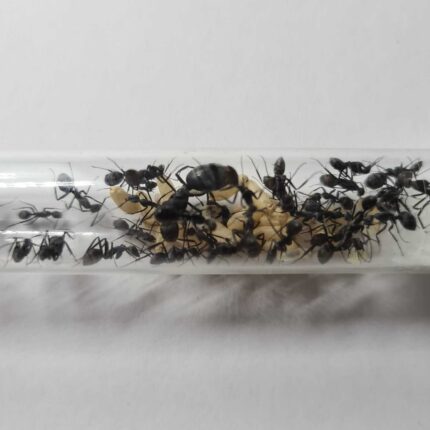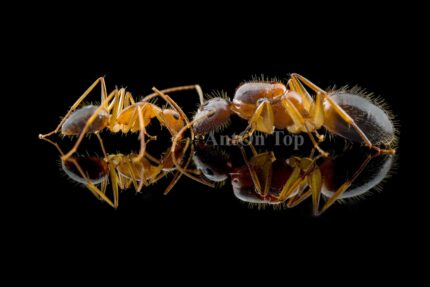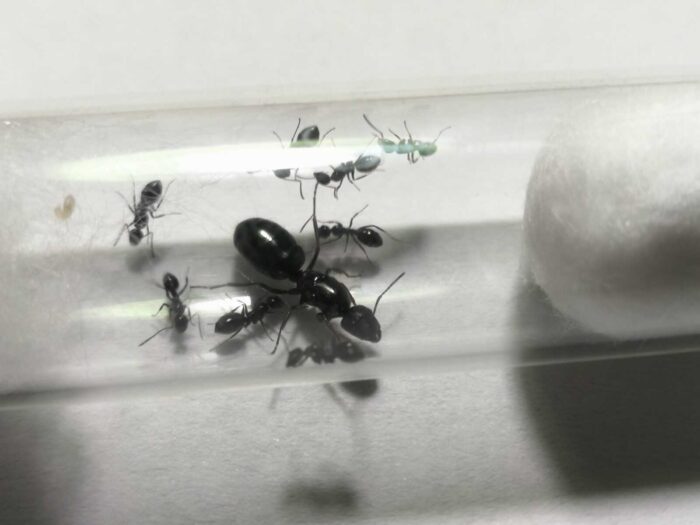
Camponotus petersii
369,90 zł – 459,90 złPrice range: 369,90 zł through 459,90 zł

Camponotus pseudoirritans
169,90 zł – 319,90 złPrice range: 169,90 zł through 319,90 zł
Camponotus piceus
65,90 zł – 129,90 złPrice range: 65,90 zł through 129,90 zł
SKU:
AOTA78
Category: Ants
Tags: ant, Ant Atlas, ant colony, ant on top, antontop, ants, atlas, Atlas de hormigas, Atlas Mrówek, Camponotus piceus, Camponotus sylvaticus, Camponotus vagus, Queen of ants
Worldwide shipping
Free delivery over 999 PLN
The highest quality of goods
Live delivery guarantee
24/7 Personal Support
Fair Prices
Description
Camponotus piceus is a monogynous ant species with colonies that can reach up to 1000 worker ants. They have a medium development rate. The queen is 8-10 mm in size, while the workers are 3-5 mm and the majors are 7-8 mm. They have a glossy black color. Their nutrition includes food insects, syrup, fruits, vegetables, jelly, and cooked chicken without salt.
Additional information
| Behavior | |
|---|---|
| Difficulty in breeding | |
| Origin | |
| The size of ants | |
| Wintering |
Description
Camponotus piceus
Colony Information
Colony type: Monogyny
Colony size: Up to 1000 workers
Development rate: Medium
Size
- Queen: 8-10mm
- Workers: 3-5mm
- Majors: 7-8mm
Color: Glossy black
Nutrition
- Food insects (Cockroaches, crickets)
- Syrup (Water / Honey with water ratio 4:1/3:1/2:1)
- Fruit
- Vegetables
- Jelly
- Cooked chicken without salt
Temperatura And Humidity
Arena humidity: 30-50%
Nests humidity: 50-60%
Arena temperature: 18-28 °C
Nests temperature: 20-24 °C
Recommended Nests
- Acrylic
- Cork
- Plaster
- Aerated concrete
- Wooden
Reviews
Rated 0 out of 5
0 reviews
Rated 5 out of 5
0
Rated 4 out of 5
0
Rated 3 out of 5
0
Rated 2 out of 5
0
Rated 1 out of 5
0
Be the first to review “Camponotus piceus” Cancel reply
Related products
Acromyrmex octospinosus
699,90 zł – 1299,90 złPrice range: 699,90 zł through 1299,90 zł
Select options
This product has multiple variants. The options may be chosen on the product page
Aphaenogaster feae
109,90 zł – 229,90 złPrice range: 109,90 zł through 229,90 zł
Select options
This product has multiple variants. The options may be chosen on the product page
Camponotus aeneopilosus
399,90 zł – 709,90 złPrice range: 399,90 zł through 709,90 zł
Select options
This product has multiple variants. The options may be chosen on the product page











Reviews
Clear filtersThere are no reviews yet.